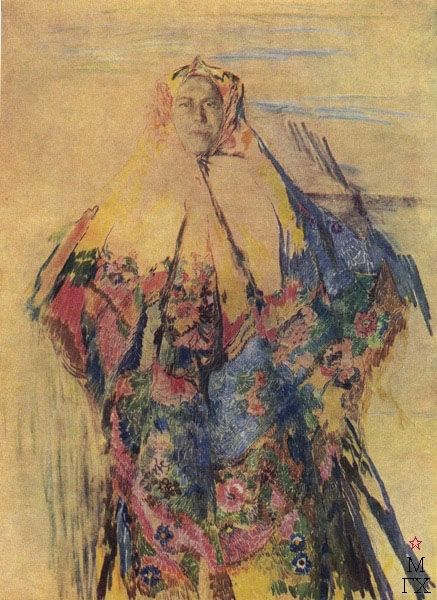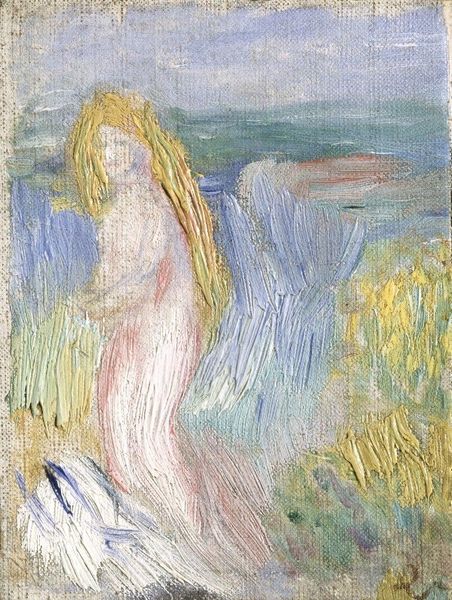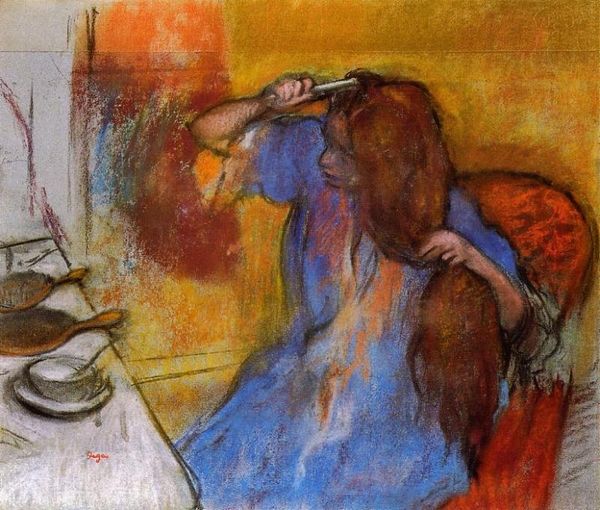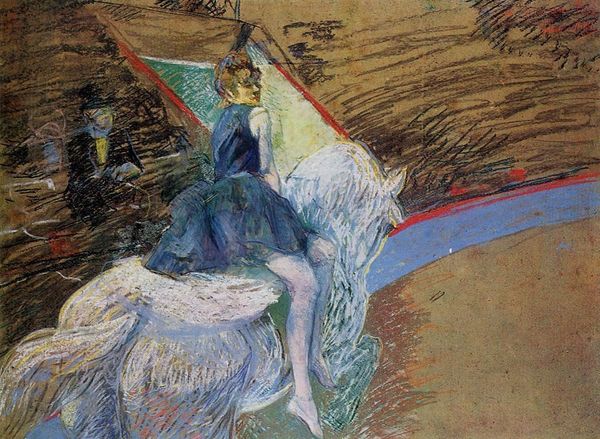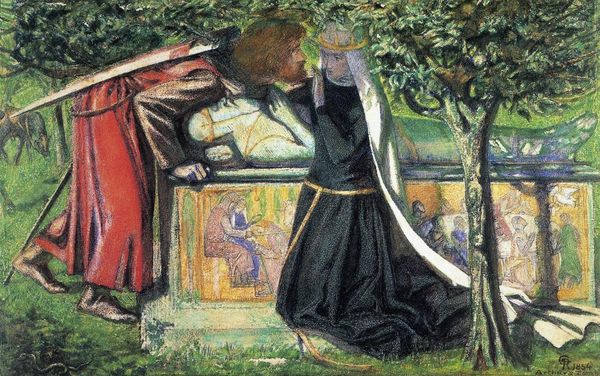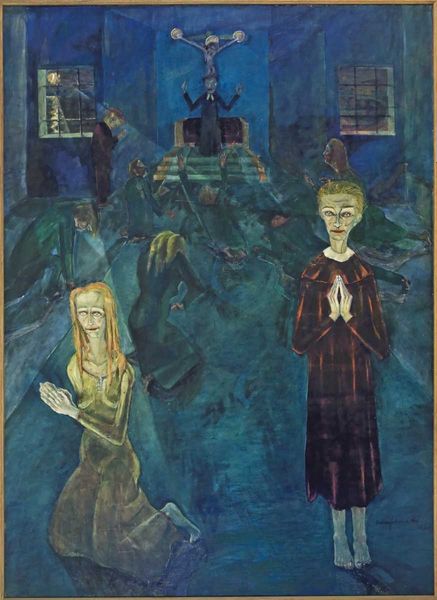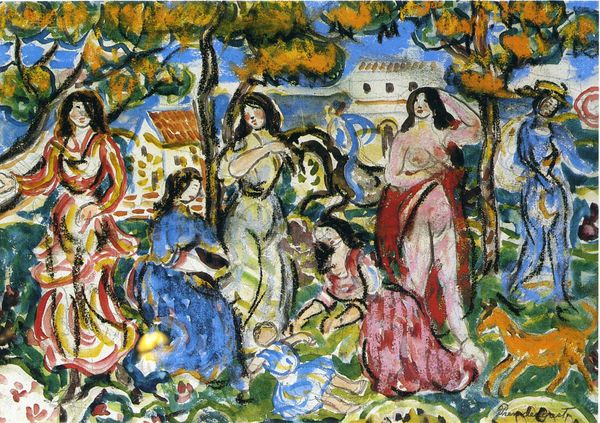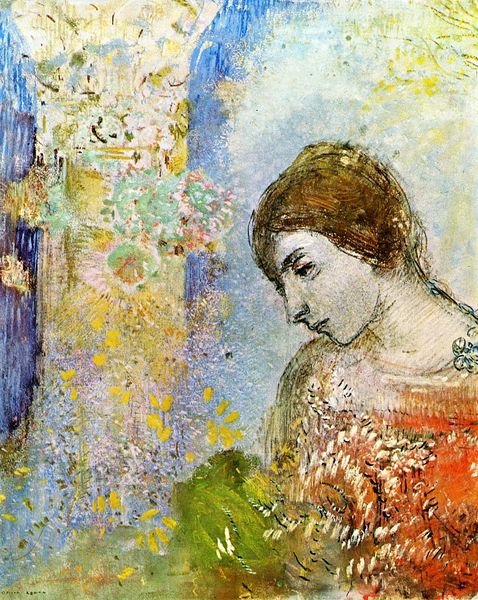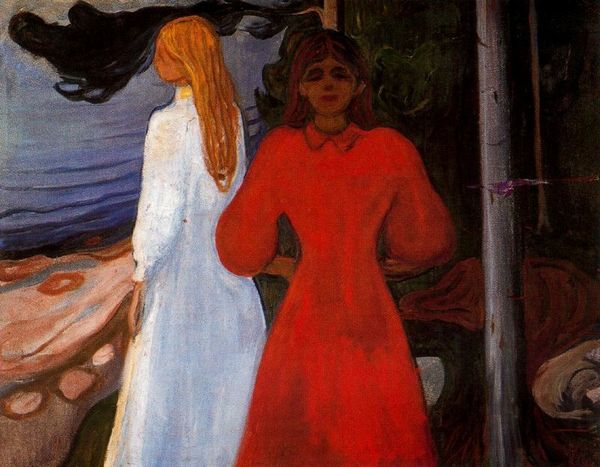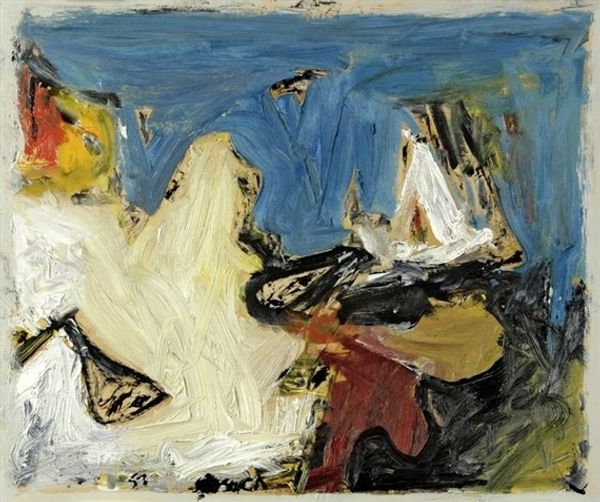
painting, oil-paint
#
portrait
#
painting
#
oil-paint
#
landscape
#
figuration
#
expressionism
#
symbolism
#
expressionist
Copyright: Public domain
Curator: Before us, we have Edvard Munch's compelling 1894 oil painting, Separation, currently residing in the Munch Museum in Oslo. Editor: My first impression is one of profound disquiet, almost bordering on tangible isolation. The pallid colors seem to suffocate the figures rather than illuminate them. Curator: The tangible texture arising from Munch’s handling of oil paint surely speaks to its inherent plasticity, capable of imbuing this Symbolist painting with the full range of human emotions through deliberate gestures and visible layers. Look closely, can you sense his emotional state via his choices in materiality and execution? Editor: Absolutely. One discerns immediately how the gestural application becomes not only expressive but indicative of Munch’s internal processing through this labor-intensive medium. The very process of creating appears fraught with internal struggle – it looks like this act was a release. Did Munch prepare these canvasses himself, or were they purchased from a merchant, primed and ready? I'm fascinated by how he considered support. Curator: Let us not dismiss the structural relationships! Notice how Munch constructs compositional tensions: The verticality of the figures starkly contrasts against a horizontally defined landscape. Also, how would you decode the dynamic use of line and color within the two distinct zones occupied by these figures? What of this clear distinction does it tell you? Editor: The two figures in the foreground are set adrift amidst an abstract field, their separation underscored through muted yet distinct tonalities: on one side, desaturated, and the other— imbued with this melancholic blues. It calls to question, what relationship does production of these materials play on its overarching themes of emotional toil? Where was the pigment mined, what labour allowed him access to it? Curator: Indeed! It's crucial to remember we're operating within an Expressionist paradigm. Color here transcends mere representation; it's deployed as an affective vehicle, to evoke specific emotive reactions in the spectator. What narrative would you construct, attending closely to each formal attribute and considering Munch’s psychological ambitions for artmaking? Editor: Beyond his emotions I ponder the economic infrastructure supporting Munch's output at that time, reflecting the shifting dynamic between art and commerce of 19th Century Norwegian artists seeking agency over their material conditions within expanding market structures of modernity. He used his art as a direct window into his interiority. Curator: Precisely, allowing us to engage more profoundly with it! Editor: A worthwhile insight into the confluence of emotional landscapes, socioeconomic constraints and artist intention during that particular cultural moment.
Comments
No comments
Be the first to comment and join the conversation on the ultimate creative platform.

